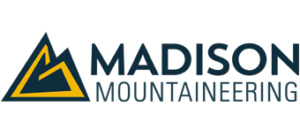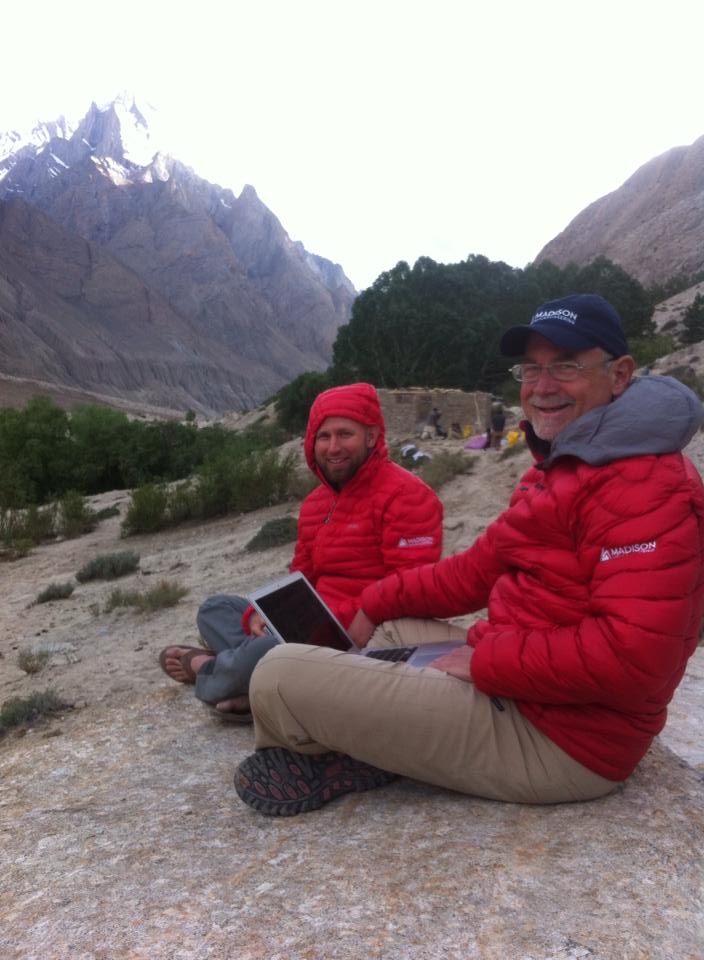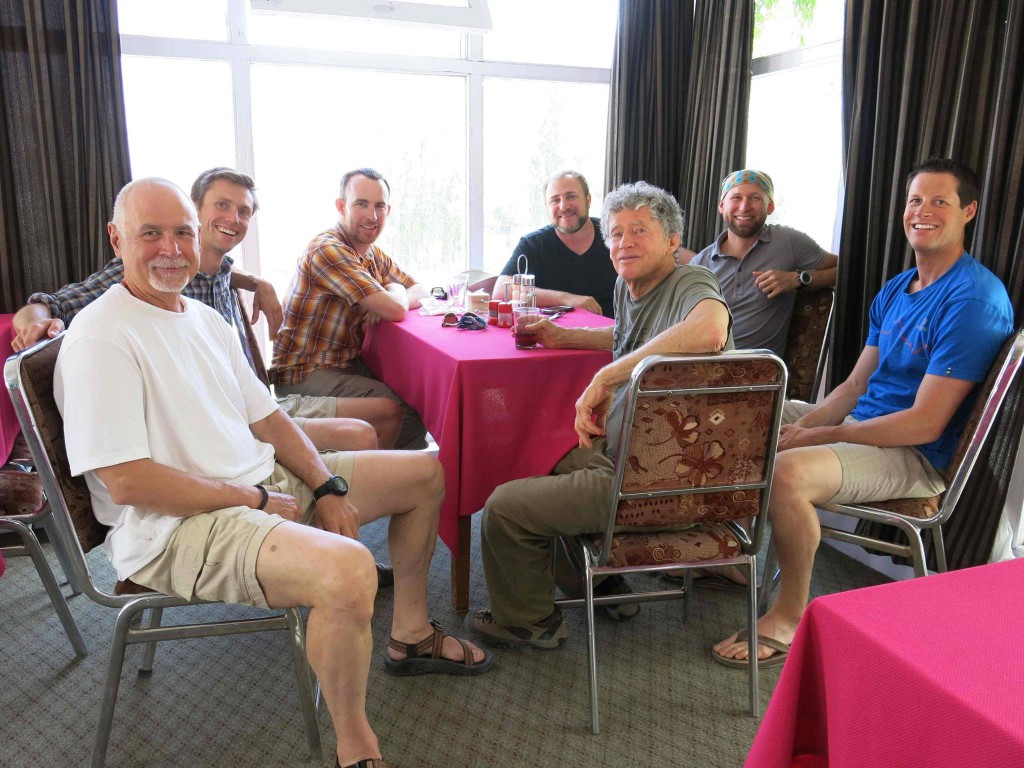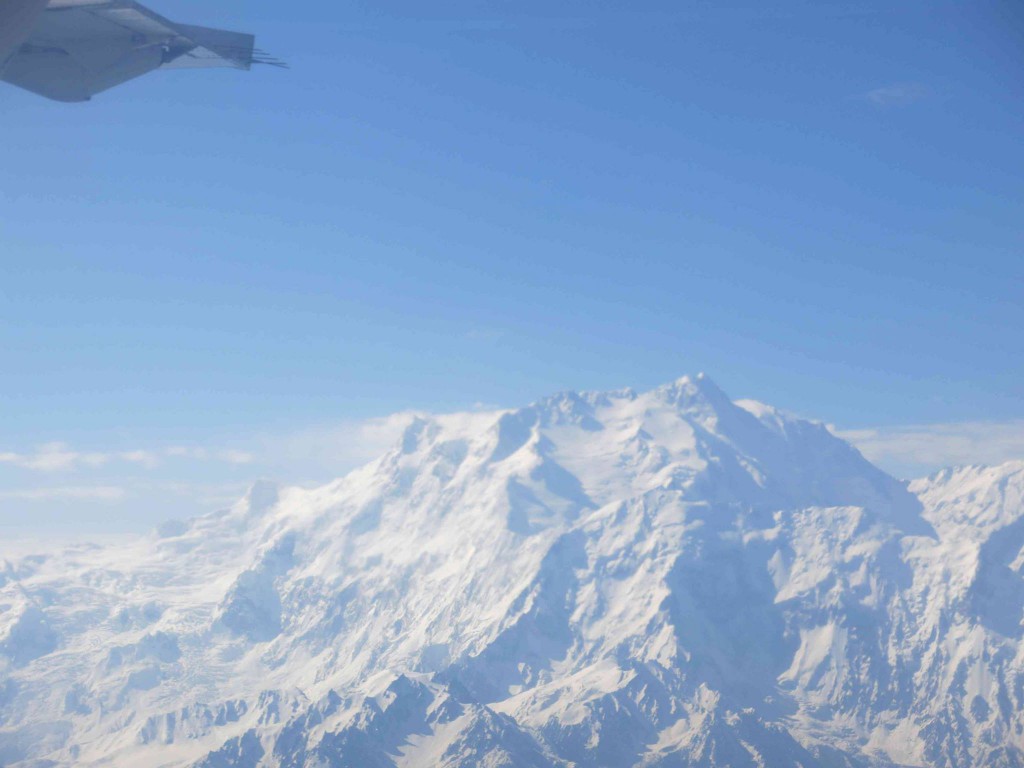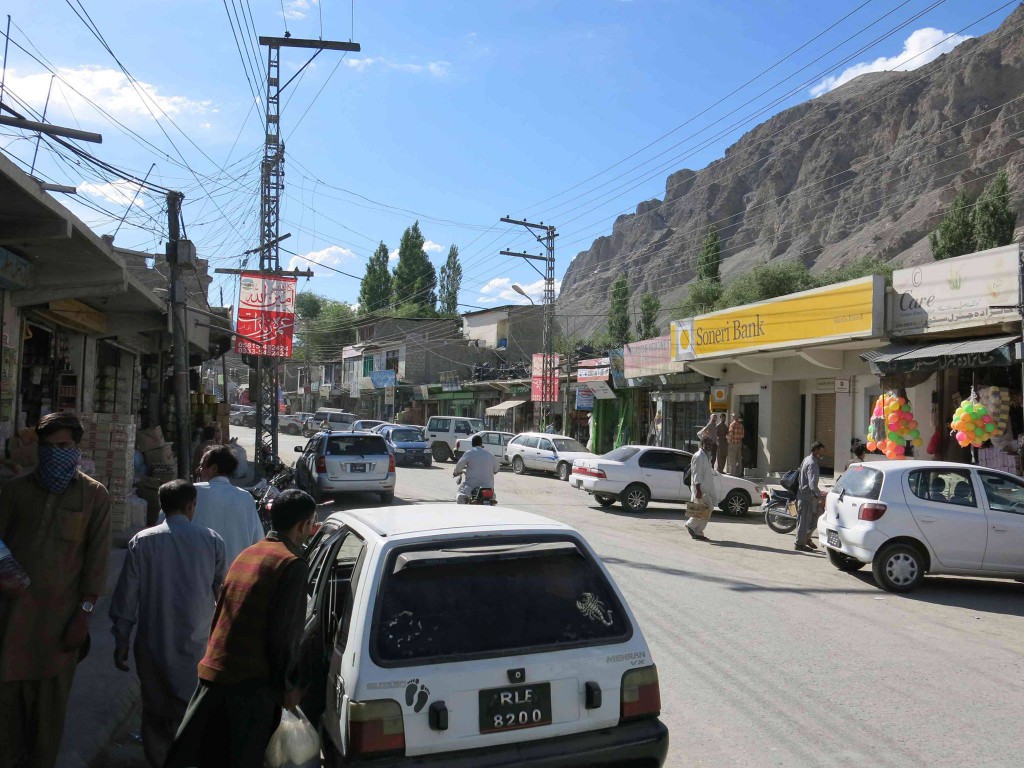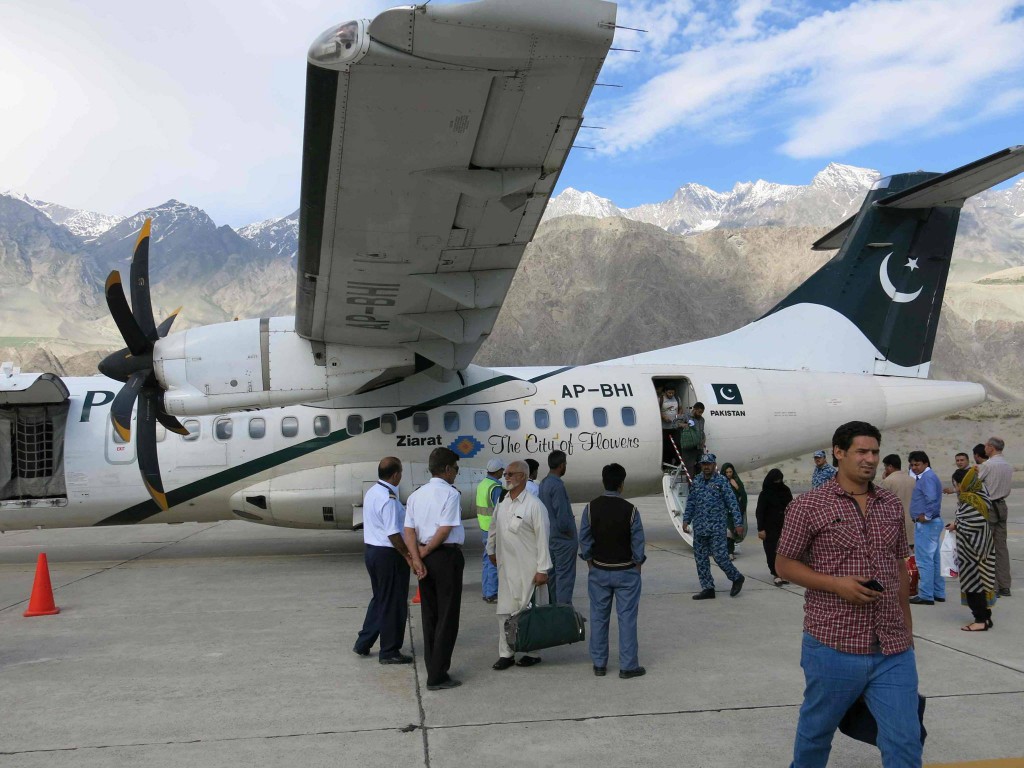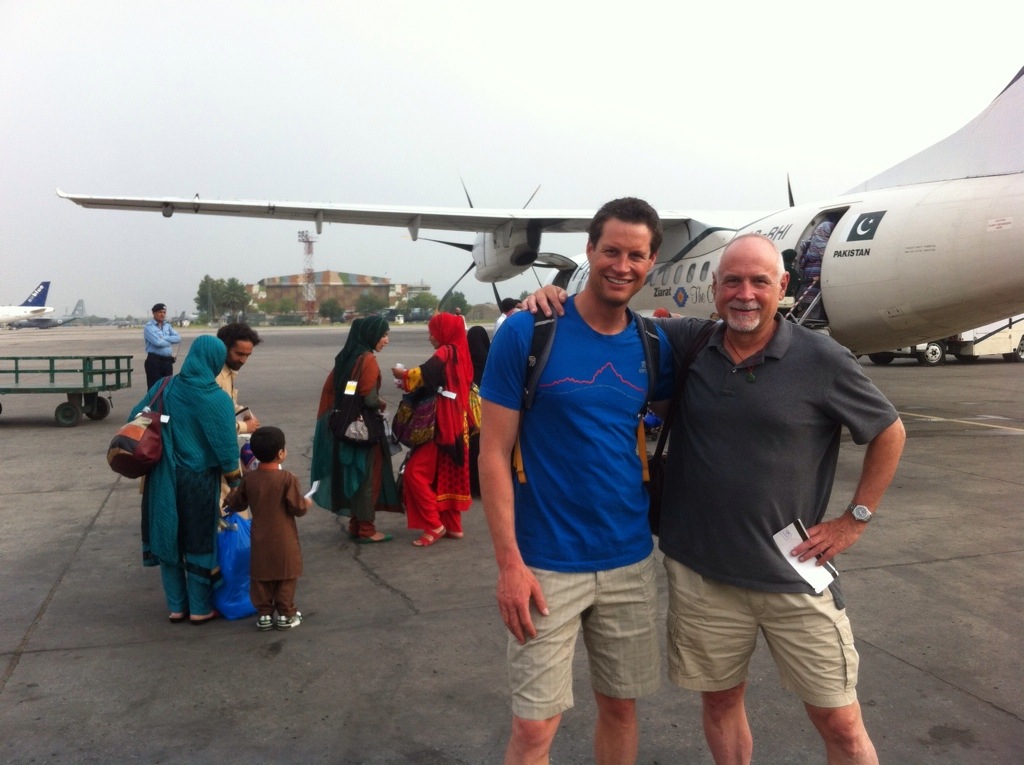All K2 expedition dispatches
K2 team doing well, enjoying a relaxing day in Skardu, we plan to drive to Askole tomorrow.
We flew early today from Islamabad to Skardu, and are very happy that the weather cooperated for the flight. We are very thankful that our local agent could rebook our tickets from yesterday, allowing us to bypass the 2 day overland drive along the Karakoram Highway. Skardu is a small yet bustling town, we have mostly been enjoying our time relaxing at the hotel, with a short walk through the village bazaar. Tomorrow we plan to organize gear in preparation for departure the following day. We will be travelling via 4WD Jeeps to the village of Askole where we will kick off our trek to K2 base camp.
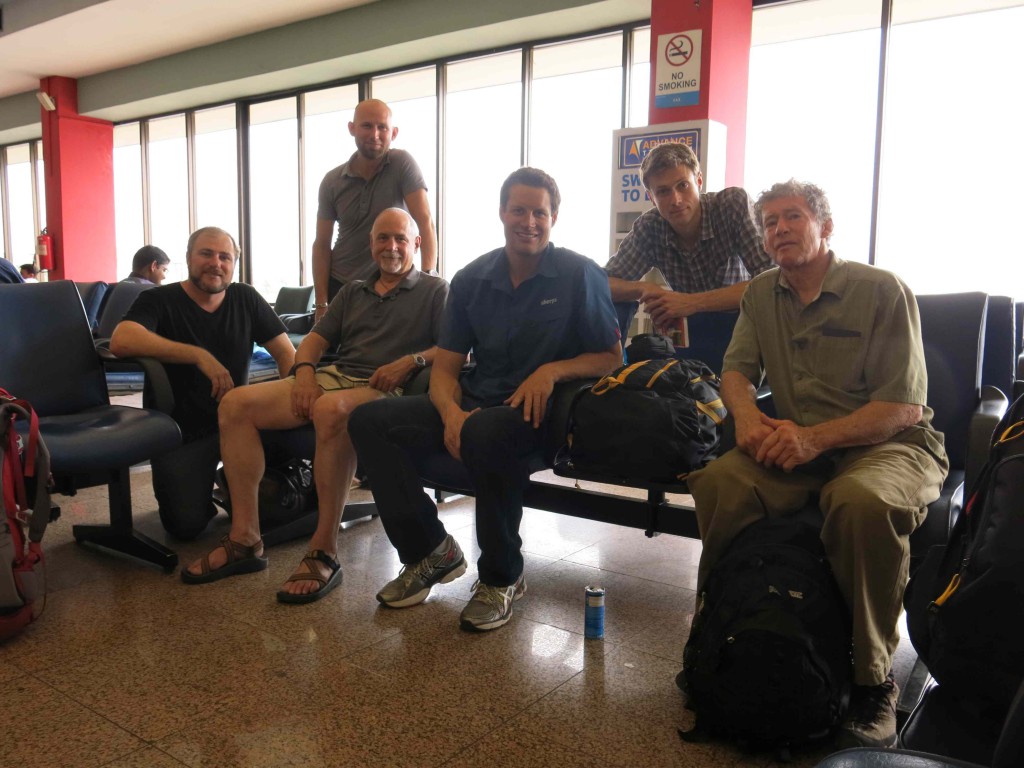
After two days of flying from North America our K2 team has finally assembled in Islamabad and our first challenge is to travel to Skardu, where we begin the jeep ride to Askole to begin the trek. Today we spent a few hours at the airport waiting for this domestic flight, however because of bad weather the flight was cancelled. We hope to fly tomorrow morning.
We made good use of our free time this afternoon by enjoying a wonderful lunch at the Marriott Hotel in Islamabad (see photo). The buffet featured American, European, and Pakistani culinary delights, and after generous helpings we retired to our hotel for a nap.
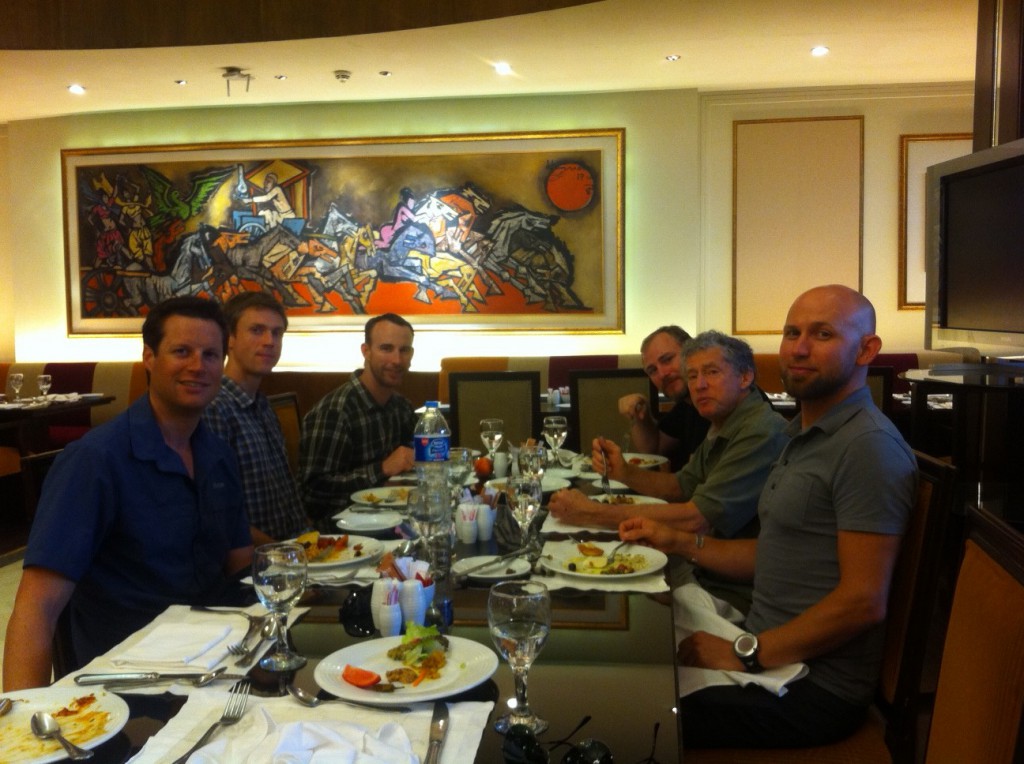
It’s been a life long dream of mine to climb “The Savage Mountain”, and with weather and route conditions permitting myself and three other American climbers will attempt to scale K2. We will be climbing with some very good friends of mine including Kami Rita Sherpa, Fur Kancha Sherpa, and Kami Tshering Sherpa, as well as a few others. I have climbed with Kami and Fur Kancha to the summit of Everest 5 times, as well as other Himalayan peaks such as Ama Dablam and Manaslu. We are great friends, and I respect them tremendously as climbers. Often they are among the lead route setters on the Everest, I have shared many good and hard days in the mountains with these men.
After months of careful preparation and planning that included extensive research of the route, dedicated fitness training, logistics for shipping our gear and food, obtaining the climbing permits and visas, and rearranging personal schedules to accommodate a 6 week expedition, we are very excited to finally make this climb a reality.
Climbing Team:
- Garrett Madison, Climb Leader
- Alan Arnette, Climber
- Matthew Dupuy, Climber
- Fredrick Sylvester, Climber
Trekking Team:
- Todd Dupuy
- Robert Whiteford
- Terray Sylvester
Climbing Support Team:
- Kami Rita Sherpa
- Fur Kancha Sherpa
- Kami Tshering Sherpa
- Mingma Sherpa
- Pemba Sherpa
- Dawa Sherpa
The K2 climbing team and trekking team have arrived in Islamabad and we are now waiting for the flight to Skardu. Hopefully the weather will be good and we can fly today.
The K2 climbing team and trekking team have arrived in Islamabad and we are now waiting for the flight to Skardu. Hopefully the weather will be good and we can fly today.
The first successfully guided commercial mountaineering expedition to K2 was led by Madison Mountaineering in 2014. On July 27th, 2014 Garrett Madison reached the summit of K2 along with climbers Alan Arnette and Matthew Dupuy and we’ve been going back ever since. We plan to return to K2 in 2024 and hope to repeat our success for many years to come.
Climbing K2 is much more challenging and far more dangerous than climbing Everest via the standard North or Southside routes, and for this reason, we plan to keep our team size small and comprised of qualified climbers, supported by some of the best climbing Sherpas and mountain guides in the world. Unlike on Everest, because the weather and route conditions are notoriously fickle on K2, we must be prepared to take advantage of very brief periods of good weather. Rockfall and snow avalanches are common on the route following K2’s Abruzzi ridge, making it often unsafe to climb or camp (as evidenced by the 2013 tragedy), and the monolithic ice cliff which overhangs the “bottleneck” and “traverse” portions of the route on summit day sheds ice frequently (as evidenced by the 2008 tragedy), so taking advantage of good route conditions and moving quickly are paramount.
8000-meter peaks such as Everest, Cho Oyu, and Manaslu are now frequented by commercial operators coordinating together to set the fixed ropes, therefore sharing this workload, however since K2 is undeveloped we will likely be working alone or with only one other team to set the fixed lines. Additionally, relying on support from other teams for help is not available so we must be self-sufficient throughout.
Unfortunately, the food available in Pakistan is not the best for foreigners, so we have developed a meal plan that encompasses the entire trek and climb. Most of this food is brought from the USA, and we have a Nepalese cook who we have worked with for many years who (with his staff) meticulously prepares each meal for our team. On the mountain, our guides and Sherpas help prepare the meals. We find that climbers perform much better, and are often in better spirits when the food is appetizing and nutritious.
We employ many porters to ferry our expedition loads to base camp. The trek to K2 base camp is more than twice the distance as the trek to Everest base camp (south side) and is considerably more arduous being mostly on glacier and loose rock. There are no villages or lodges (as on the Everest trek) so we must transport our entire camp kit by porters each day as we move our caravan towards base camp. Each porter on hire requires an additional porter to carry food and personal items, so we have a small army making our way up and down the Baltoro Glacier. It is very important to differentiate ourselves from other operators in that we have a very nice base camp, with large common tents with heating for dining and communications, and comfortable personal tents for each member. Being here for almost 2 months, it is important for our team to have a comfortable camp, as well as to have access to the internet via a satellite modem (this cost is free to all members). We have modern VHF radios for communications on the mountain, and each member is issued their own radio. We also have satellite phones available to members.
We have regular access to hot showers, sinks for washing multiple times daily, one sanitary toilet tent for men and one for women, as well as ample space for storing your personal equipment securely.
Above base camp (16,300’) we have 5 camps: Advanced Base Camp (17,400’), Camp 1 (19,900’), Camp 2 (21,980’), Camp 3 (23,800), and Camp 4 (25,300’). Unlike many teams who share tents in various camps, we have our own dedicated tents in each camp that are preset to reserve our space at the beginning of the season. One should note that at Camp 1 and Camp 2 there is only space for 6-8 tents maximum, so if you arrive late in the season you must share a tent with another team that already has their camp established if you wish to use that camp. Much of the route leading up to Camp 4 is on steep snow or ice slopes, however, there is also significant rock. Portions of the route such as House’s Chimney and The Black Pyramid involve sustained periods of vertical rock climbing, so one should be well versed using crampons on steep rock at high altitude.
Our plan is to climb partway up the route reaching Camp 3 to acclimatize before making our summit rotation. For details regarding our acclimatization and Oxygen strategy please contact our office.
On summit day we begin the gradual ascent of “the Shoulder” on hard snow and ice leading up to the bottleneck, a rock and snow climb under the looming Serac. Next is the “Traverse” which is mostly front pointing, and then the upper snow slopes leading to K2’s summit, where we are often breaking trail through knee-deep snow. The view from the top is amazing!
